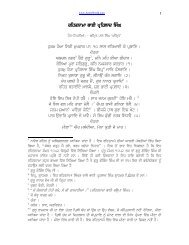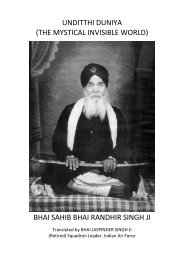Guru Gobind Singh's Death at Nanded Examination of - Vidhia.com
Guru Gobind Singh's Death at Nanded Examination of - Vidhia.com
Guru Gobind Singh's Death at Nanded Examination of - Vidhia.com
You also want an ePaper? Increase the reach of your titles
YUMPU automatically turns print PDFs into web optimized ePapers that Google loves.
12 AN EXAMINATION OF SUCCESSION THEORIES<br />
Baghaur in Rajasthan. He immedi<strong>at</strong>ely marched back towards<br />
the Panjab and was in the neighbourhood <strong>of</strong> Delhi<br />
when the emissaries <strong>of</strong> the heir-apparent Prince Muhammad<br />
Muazzam appealed to him for assistance. He was then face<br />
to face with a gre<strong>at</strong> trial <strong>of</strong> his life. And he was able to meet<br />
it boldly and in the right way. He was not to be deflected<br />
from the right decision by memories <strong>of</strong> past bitter rel<strong>at</strong>ions<br />
with the prince's ancestors. For him the bitter past had died<br />
with the past. He rose above the weaknesses <strong>of</strong> revengeful<br />
mortals and, like a true <strong>Guru</strong> and a chivalrous soldier th<strong>at</strong><br />
he was, he espoused the cause <strong>of</strong> the rightful claimant to the<br />
imperial throne against his usurping younger brother<br />
Muhammad Azam and helped him with a detachment <strong>of</strong> men<br />
in the b<strong>at</strong>tle <strong>of</strong> Jajau in June 1707. He met the new emperor,<br />
Shah Alam Bahadur Shah (the old Prince Muhammad<br />
Muazzam) <strong>at</strong> Agra in a public darbar on July 23, 1707, when<br />
the royal host publicly acknowledged the <strong>Guru</strong>'s assistance<br />
in the war <strong>of</strong> succession and presented to him, in token<br />
there<strong>of</strong>, a rich dress <strong>of</strong> honour, including a dhukh-dhukhi worth<br />
sixty thousand rupees. The <strong>Guru</strong> was then ac<strong>com</strong>panied by<br />
a number <strong>of</strong> Sikhs. He kept his people in the Panjab and<br />
elsewhere fully informed through formal letters not only <strong>of</strong><br />
his important activities but also <strong>of</strong> his future intentions and<br />
programme. He kept nothing secret from the Khalsa whom<br />
he had openly, and on many occasions, declared to be his<br />
very self—Khalsa mero roop hai khas, Khdlse men hau karaun<br />
nivds. Nor did he ever, throughout his normal life, travel<br />
or move about incognito. In the train <strong>of</strong> Emperor Bahadur<br />
Shah moving to the Deccan, he was ac<strong>com</strong>panied by a number<br />
<strong>of</strong> Sikhs and availed himself <strong>of</strong> the opportunity <strong>of</strong> visiting<br />
the various Sikh Sang<strong>at</strong>s on the way. The Tdrikh-i-Bahddur<br />
Shdhi tells us th<strong>at</strong>, when ac<strong>com</strong>panying the royal camp, "he<br />
was in the habit <strong>of</strong> constantly addressing assemblies <strong>of</strong><br />
worldly persons, religious fan<strong>at</strong>ics and all sorts <strong>of</strong> people."<br />
[Elliot and Dowson, History <strong>of</strong> India, viii, p. 566.]<br />
At <strong>Nanded</strong>, where he arrived in the last week <strong>of</strong> August<br />
1708, he performed the normal duties <strong>of</strong> life and regularly<br />
GURU GOBIND SINGH S DEATH AT NANDED<br />
<strong>at</strong>tended and addressed the assemblies <strong>of</strong> the Sikhs and other<br />
people both in the morning and afternoon when the dhadis<br />
headed by N<strong>at</strong>h Mall and his <strong>com</strong>panions recited ballads on<br />
Sikh themes. He was in the best <strong>of</strong> spirits throughout his<br />
stay there. Although warned on his way to the Deccan by<br />
the Dadupanthi saint Jait Ram <strong>of</strong> the sorceries <strong>of</strong> the Bairagi<br />
ascetic Madho Das, the <strong>Guru</strong> visited his hermitage on the<br />
bank <strong>of</strong> the river Godavri on September 3, 1708, the day <strong>of</strong><br />
sun-eclipse, and successfully reclaimed him to a normal life<br />
in the world. He then baptized him into - a regular Khalsa<br />
and relumed him with Promethean fire to play in the Panjab<br />
the historic role <strong>of</strong> a valiant hero and a gre<strong>at</strong> martyr. Even<br />
when he had been stabbed near the heart and his imperfectly<br />
healed wound had burst open as the result <strong>of</strong> his bending a<br />
stiff bow, he maintained his usual cheerfulness and told his<br />
sorrowful Sikhs not to give way to mourning on his de<strong>at</strong>h.<br />
In his last farewell message, he told the Khalsa: "I have<br />
entrusted you to the Immortal God. ... I have infused my<br />
mental and bodily spirit into the Granth Sahib and the<br />
Khalsa.... Obey the Granth Sahib. It is the visible body <strong>of</strong><br />
the <strong>Guru</strong>." [Macauliffe, The Sikh Religion, vol. V, p. 244.]<br />
f. PERSONAL SUCCESSION DISCONTINUED —<br />
THE GRANTH TO BE GURU IN FUTURE<br />
It is a very significant thing indeed from historical<br />
point <strong>of</strong> view th<strong>at</strong> he did not nomin<strong>at</strong>e any one <strong>of</strong> his followers<br />
to succeed him as <strong>Guru</strong> <strong>of</strong> the Sikhs. Those who have<br />
studied the story <strong>of</strong> his life know th<strong>at</strong> <strong>at</strong> the institution <strong>of</strong> the<br />
baptismal ceremony and, through it, <strong>of</strong> the cre<strong>at</strong>ion <strong>of</strong> the<br />
Khalsa, on the Baisakhi day <strong>of</strong> 1756 Bikrami, March 30,<br />
1699, he had not only presented himself to be-formally initi<strong>at</strong>ed<br />
into the fr<strong>at</strong>ernity <strong>of</strong> the Khalsa but had also submitted<br />
himself to the discipline which had been prescribed by him<br />
for the new order <strong>of</strong> the Singhs (the Khalsa). This virtually<br />
meant the surrender <strong>of</strong> his high <strong>of</strong>fice <strong>of</strong> <strong>Guru</strong>ship to the will<br />
<strong>of</strong> the Khalsa and its merger into the body politic <strong>of</strong> the new<br />
order. And this is wh<strong>at</strong> he re-affirmed and declared from his<br />
de<strong>at</strong>hbed. In the words <strong>of</strong> Sainap<strong>at</strong>, who was not only a<br />
13




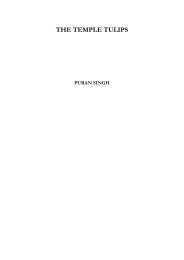
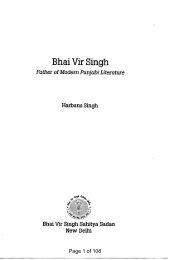

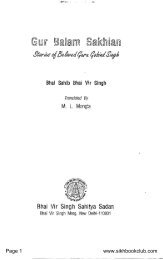
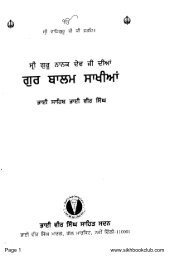
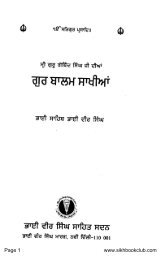
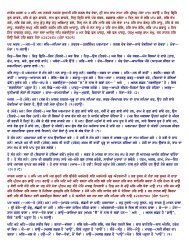
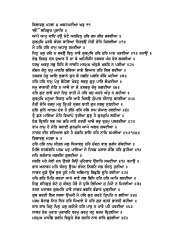

![cOpeI ] hmrI kro hwQ dY r~Cw ] pUrn hoie ic~q kI ie ... - Vidhia.com](https://img.yumpu.com/12240258/1/190x245/copei-hmri-kro-hwq-dy-rcw-purn-hoie-icq-ki-ie-vidhiacom.jpg?quality=85)
